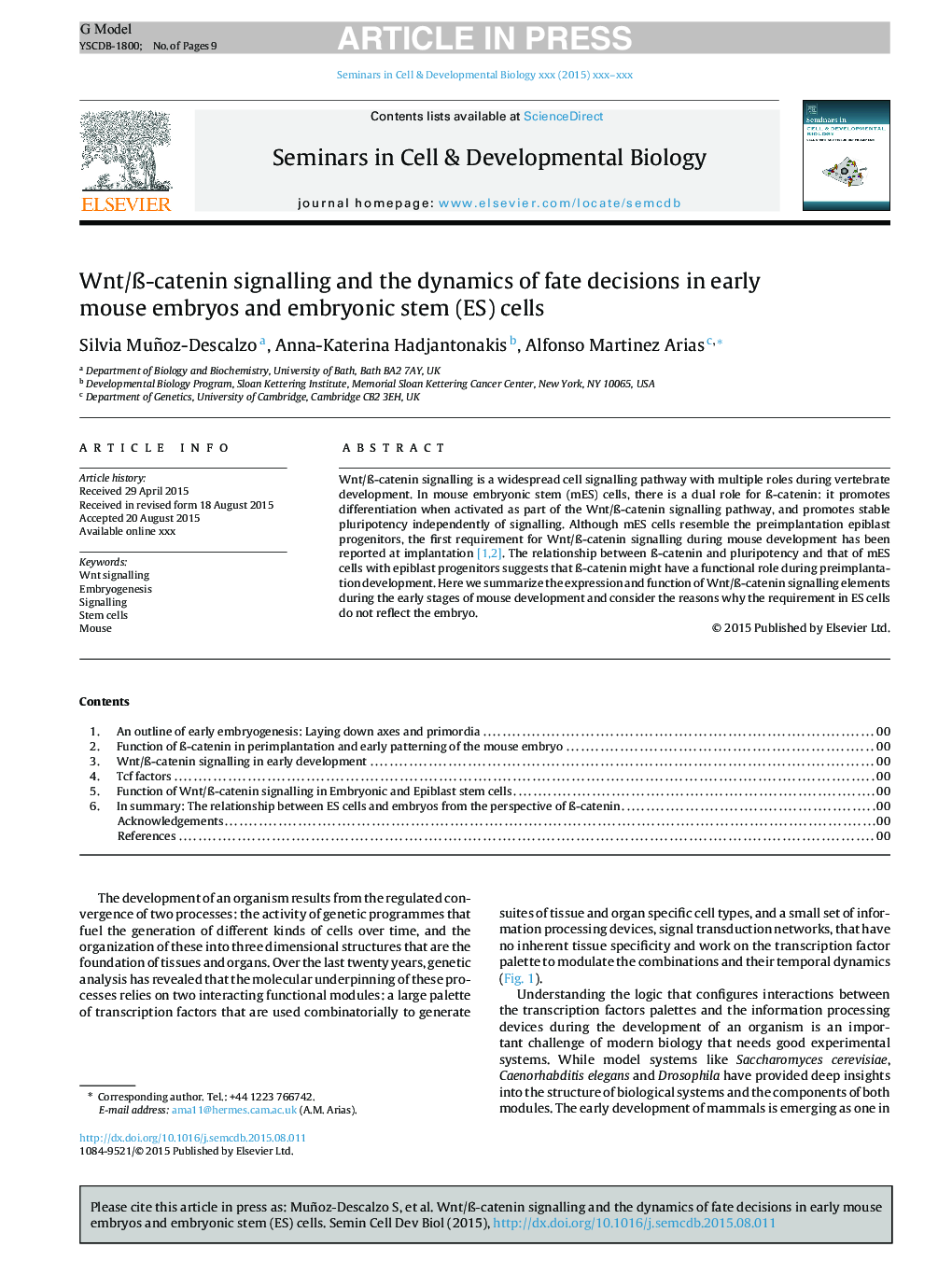| Article ID | Journal | Published Year | Pages | File Type |
|---|---|---|---|---|
| 8480277 | Seminars in Cell & Developmental Biology | 2015 | 9 Pages |
Abstract
Wnt/Ã-catenin signalling is a widespread cell signalling pathway with multiple roles during vertebrate development. In mouse embryonic stem (mES) cells, there is a dual role for Ã-catenin: it promotes differentiation when activated as part of the Wnt/Ã-catenin signalling pathway, and promotes stable pluripotency independently of signalling. Although mES cells resemble the preimplantation epiblast progenitors, the first requirement for Wnt/Ã-catenin signalling during mouse development has been reported at implantation [1], [2]. The relationship between Ã-catenin and pluripotency and that of mES cells with epiblast progenitors suggests that Ã-catenin might have a functional role during preimplantation development. Here we summarize the expression and function of Wnt/Ã-catenin signalling elements during the early stages of mouse development and consider the reasons why the requirement in ES cells do not reflect the embryo.
Related Topics
Life Sciences
Biochemistry, Genetics and Molecular Biology
Cell Biology
Authors
Silvia Muñoz-Descalzo, Anna-Katerina Hadjantonakis, Alfonso Martinez Arias,
